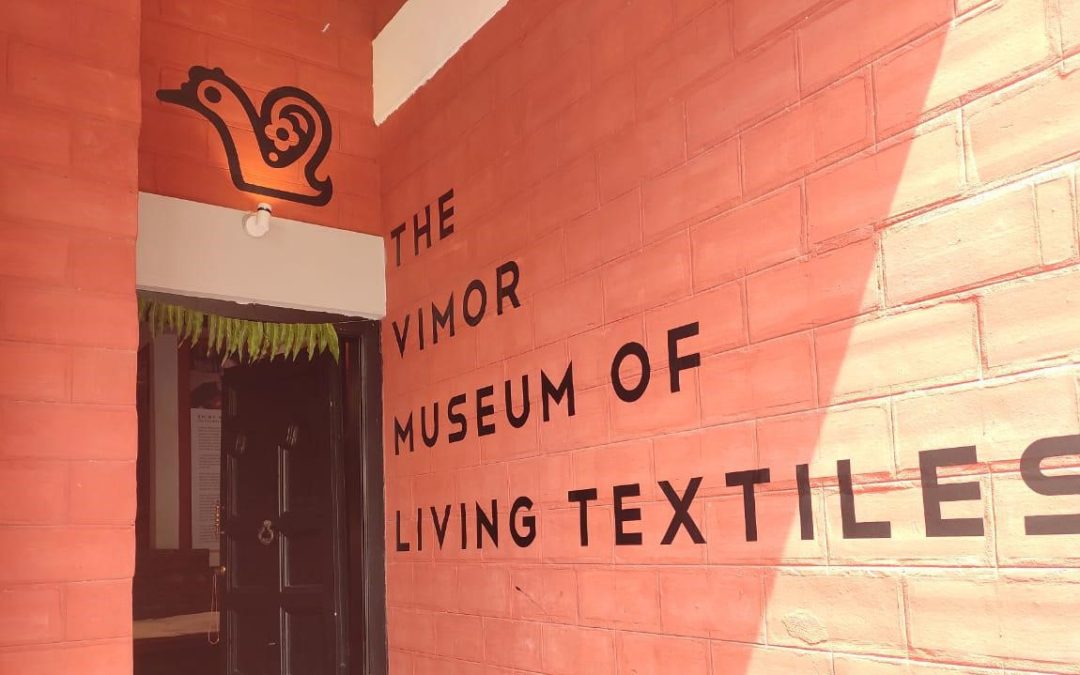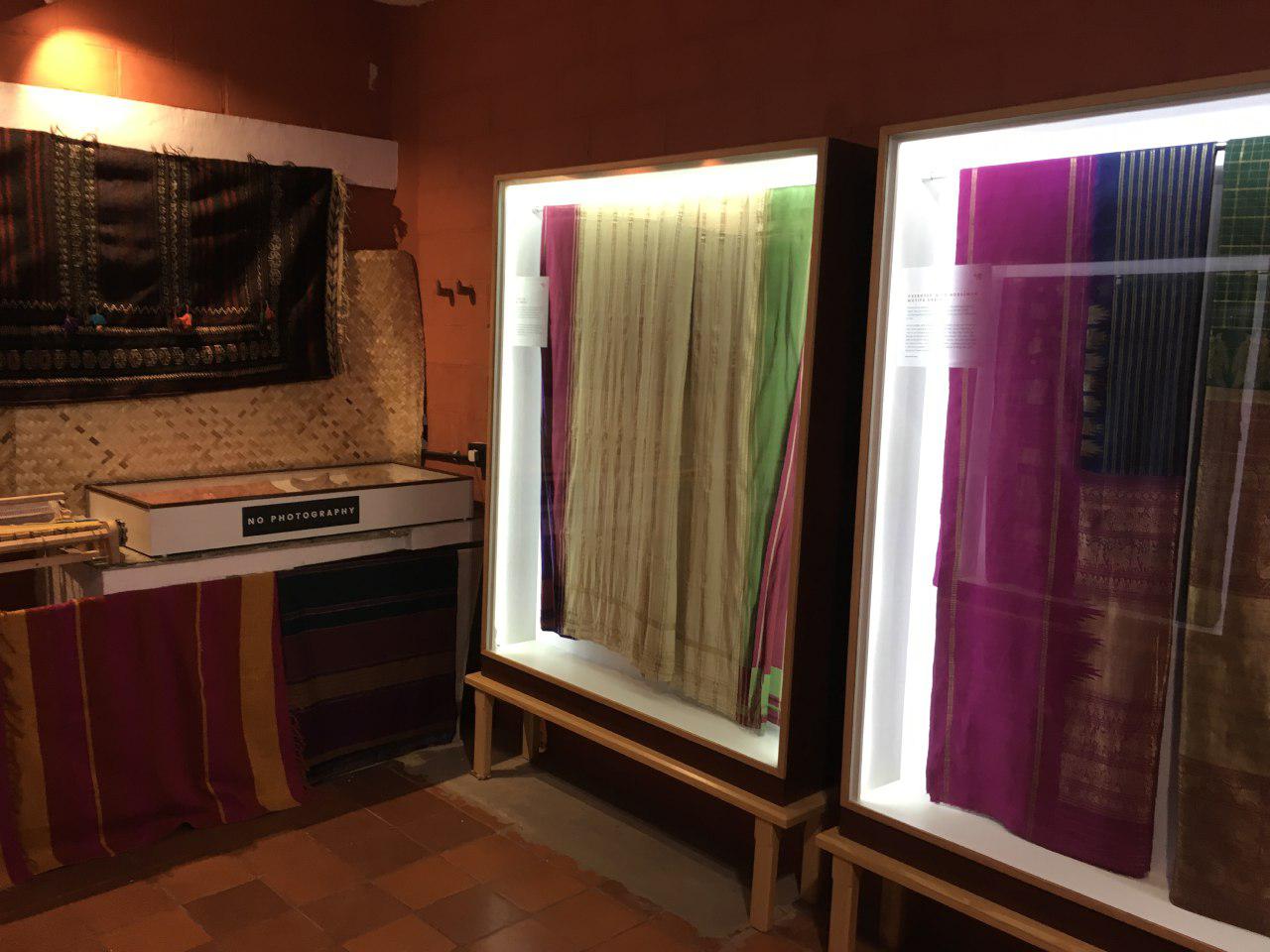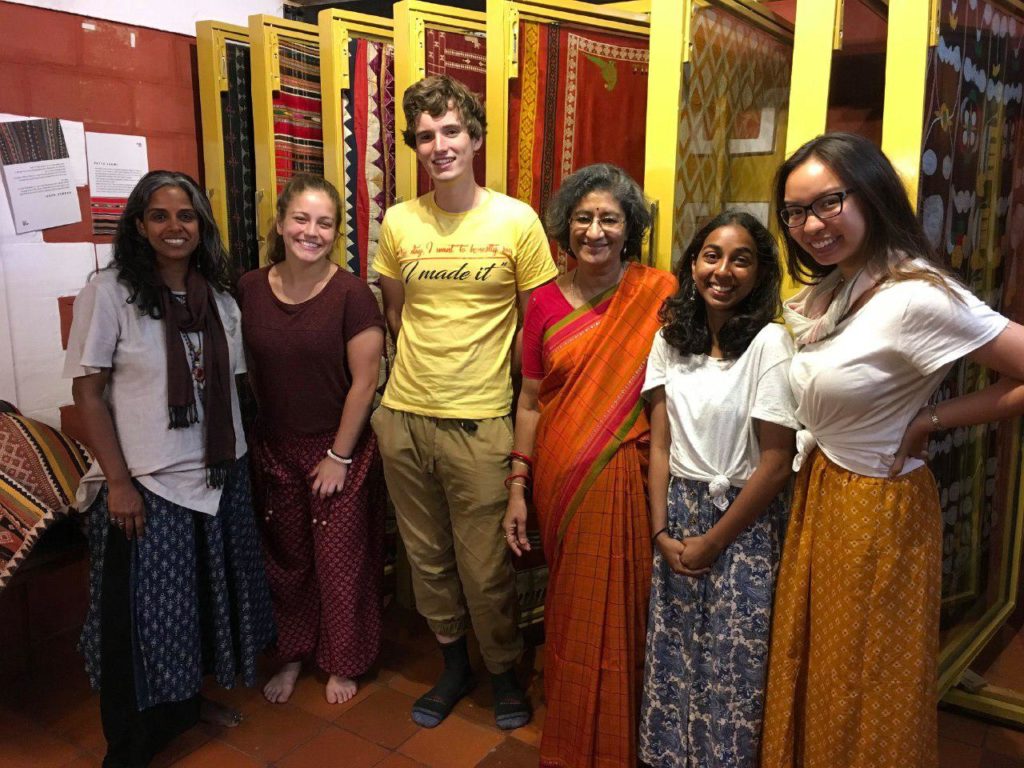Considering you’ve been running a successful enterprise for the last 45 years, what prompted the decision to build the Vimor museum?
The decision to start a museum was a long-standing dream of mine, more than 20 odd years. I realised the success my weavers had was because I exposed them to old textiles, spoke about it and wanted them to be inspired. I realised that I was a better teacher than a business person. I thought more people, especially the weavers, seeing the textiles and knowing about it will allow them to be creative and create their own designs and take them forward.
The idea of the museum came in when I was doing a British Council-sponsored course many years ago and I’ve had a written report on what I want to do with the museum since then. But due to various reasons, it got stalled. Until now. I realised that time is running out and I need to do it. And it has been a great success in the sense [that] lots of people and students are [visiting the museum] and that is what is most important.
The reason for [calling it] a ‘living museum’ is because it’s not sponsored by any kind of royal textiles or commissioned textiles. It celebrates the common man’s need for aesthetics and the weaver uses his room as a canvas to create things of beauty.
You’ve worked extensively with the weaver community across the country, how do you manage and sustain this vast network? How are they involved in the museum?
This is an amazing question that you’re asking me because I’ve never thought that I’ve worked extensively with the weaver community across the country. Also, I’ve never thought of it as a network because they’re all family to me. Every design was a challenge at one time. I wanted to preserve the design and I wanted to impact lives. So, we handled it one at a time and we let them go along with my design which wasn’t patented and they have prospered. That is the goodwill that has kept us relevant. For my 45 year event, people have come from all across just to be with me. When the press asked them what is it that brought them here because there were no sales, they said that Vimor is family and there was no question of not coming.
They look at it as their celebration and they say it’s the first time that [they’ve been] given a platform to talk and ask questions. Nobody has ever done that. Because most [of the time] these events on textiles will be with people who are very well known nationally, internationally but it’s never the weaver who is at the forefront. I think having a personal relationship which goes beyond business is what the ‘network’ is about.
Also Read: In Conversation with Dr Balamani Malladi, co-curator – ‘Constellation’
What has been the response to the museum? Can you tell us about the different kinds of visitors that come to the museum?
We mostly get design students, young school kids and a lot of senior citizens. For senior citizens, it’s a great experience to relive the times when they have worn a lot of these textiles. For the design students, it has opened their eyes and they have [gone on to do] projects with us. I look at it as a way of taking it forward as they’re the next generation. As for school kids, it is very important to understand that everything doesn’t come out of a machine.
My weavers have been fascinated with the museum and in fact, they’ve gone back, dug out their mother’s saree and have donated it to me, which is an amazing thing. One of the weavers had his mother’s wedding saree that had the Parliament House and the globe in the centre and it was amazing that 78 years ago a weaver would understand the concept of global peace and how our parliament and how the Indian democracy was contributing towards world peace. That is the beauty of textiles that are not period textiles.
Several museums are now actively working towards engaging a younger audience. How does Vimor, a museum that looks at something so specific as heritage textiles, engage and inspire the younger generation?
The very purpose of having a museum or doing any work in textiles is for the younger generation to take it forward and to know it is in safe hands. From the museum’s point of view, it builds a sense of pride and a sense of ownership because the one point that we always stress is that textiles are every Indian’s common heritage. Besides, you have to remember that the world opened up to India because of its exotic textiles. So textiles of the world and India and the coming generation are very closely related. It is very specific because everyone wears clothes and everyone has a feel and touch of every textile all through their growing up years, all the memories of important occasions are very specific to textiles so you have different kinds of colours of sarees for different occasions. So all through a woman’s growing up from a young girl to the time she gets married and has children, every occasion is marked by a saree, so there’s always an emotional connect.
When we recall any memory it is also associated with a textile. By putting it out and showing [the younger generation] what we have inherited I think they are in awe and I’d like to believe that it would make them understand and appreciate the hands that made them.
~ENDS~










Recent Comments